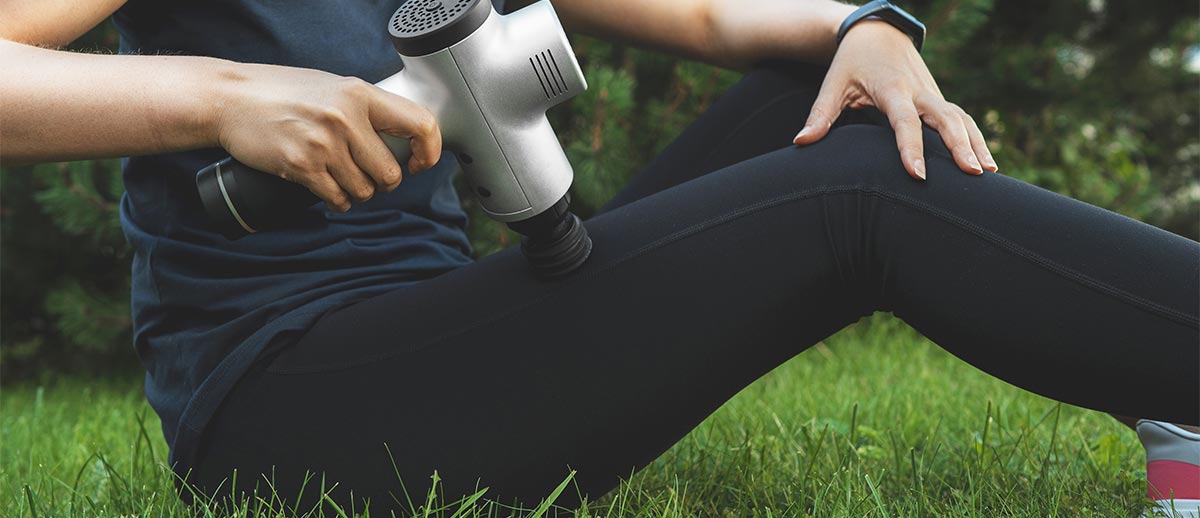How Much Do You Know about Stretching?
Advice to improve your movement, fitness, and overall health from the world's #1 in orthopedics.
Stretching is a crucial aspect of physical fitness. And yet as much as we hear about how important it is, many of us hold ideas about stretching that aren’t entirely accurate.

Can you tell stretching fact from fiction? Patrick Vignona, PT, MSPT, SCS, certified MDT, a clinical specialist with the Tisch Sports Performance Center at HSS, clears up commonly held stretching myths and truths.
Correct! Yes, it’s important to stretch before a workout. And it’s also important to warm up before stretching. “Think of your muscles like an unchewed piece of gum,” Vignona says. “You need to chew it a bit before you can bend or stretch it.” Vignona recommends 5 to 10 minutes on a bike or an easy jog. “You want something to get your heart rate and body temperature up so your muscles are a bit looser and more pliable.”
Nice try! The correct answer is True. Yes, it’s important to stretch before a workout. And it’s also important to warm up before stretching. “Think of your muscles like an unchewed piece of gum,” Vignona says. “You need to chew it a bit before you can bend or stretch it.” Vignona recommends 5 to 10 minutes on a bike or an easy jog. “You want something to get your heart rate and body temperature up so your muscles are a bit looser and more pliable.”
Correct! Dedicating a few minutes to stretching at all these times can help improve your activities in and out of the gym. Stretching before a workout preps your muscles for what’s to come, while stretching and foam rolling after help them relax. “Depending on how hard the workout is, your muscles could have trouble getting back to a comfortable state,” Vignona says. Stretching can help with that.
It’s also helpful to stretch after a period of prolonged immobility, like after sleeping or sitting at a desk for hours. “Muscles are made to move,” Vignona says. “Long bouts without moving are not ideal for tissue health.” What’s more, stretching can also improve your sleep. Try these gentle stretches shortly before bed.
Nice try! The correct answer is E. Dedicating a few minutes to stretching at all these times can help improve your activities in and out of the gym. Stretching before a workout preps your muscles for what’s to come, while stretching and foam rolling after help them relax. “Depending on how hard the workout is, your muscles could have trouble getting back to a comfortable state,” Vignona says. Stretching can help with that.
It’s also helpful to stretch after a period of prolonged immobility, like after sleeping or sitting at a desk for hours. “Muscles are made to move,” Vignona says. “Long bouts without moving are not ideal for tissue health.” What’s more, stretching can also improve your sleep. Try these gentle stretches shortly before bed.
Correct! There are lots of ways to stretch — and no “right” way. Depending on your fitness levels and goals, holding stretches for 30 seconds may be more beneficial than dynamic stretching, or vice versa. Vignona recommends dynamic stretching as a warmup before a workout to prep the muscles for activity. He also generally prefers repetitions of movements with rests over longer holds, explaining that “holding a single stretch for a long period isn’t going to change the structure or flexibility of the muscle.”
And while a stretch may cause some discomfort, it should not hurt. “Stretching deeply can be a bit uncomfortable,” Vignona says, “but it should be not be painful.”
Nice try! The correct answer is E. There are lots of ways to stretch — and no “right” way. Depending on your fitness levels and goals, holding stretches for 30 seconds may be more beneficial than dynamic stretching, or vice versa. Vignona recommends dynamic stretching as a warmup before a workout to prep the muscles for activity. He also generally prefers repetitions of movements with rests over longer holds, explaining that “holding a single stretch for a long period isn’t going to change the structure or flexibility of the muscle.”
And while a stretch may cause some discomfort, it should not hurt. “Stretching deeply can be a bit uncomfortable,” Vignona says, “but it should be not be painful.”
Correct! We’d all love to believe that a good stretch before hitting the trails, courts or field ensures an injury — and pain-free activity session. But there just isn’t definitive evidence that this is the case, according to the research. “We know flexibility allows the joints to move in the ways they’re supposed to and the muscles to perform better, and that could help prevent muscles strains or pulls,” says Vignona. “But that’s all to say that stretching helps but doesn’t mean you’ll totally avoid injury.”
Nice try! The correct answer is False. We’d all love to believe that a good stretch before hitting the trails, courts or field ensures an injury — and pain-free activity session. But there just isn’t definitive evidence that this is the case, according to the research. “We know flexibility allows the joints to move in the ways they’re supposed to and the muscles to perform better, and that could help prevent muscles strains or pulls,” says Vignona. “But that’s all to say that stretching helps but doesn’t mean you’ll totally avoid injury.”
Correct! Sure, we may look back on our childhood and young adulthood as a time of infinite energy, easy mobility and freedom from injury — all without needing to stretch. But stretching is a lifelong practice, and starting young is a good way to develop the habit. That said, stretching is more important as you get older to maintain flexibility,” Vignona says. “The muscles shorten as you get older. But just because you’re a kid and flexible now doesn’t mean you shouldn’t stretch.”
Nice try! The correct answer is True. Sure, we may look back on our childhood and young adulthood as a time of infinite energy, easy mobility and freedom from injury — all without needing to stretch. But stretching is a lifelong practice, and starting young is a good way to develop the habit. That said, stretching is more important as you get older to maintain flexibility,” Vignona says. “The muscles shorten as you get older. But just because you’re a kid and flexible now doesn’t mean you shouldn’t stretch.”
Correct! If the prospect of an additional half-inch of height is motivation for a more consistent stretching practice, by all means go for it. The reality isn’t so straightforward, though. “Stretching can help fix your posture,” Vignona says. “It elongates your muscles so you’ll be more upright. But it doesn’t change your bone structure or actually make you taller.”
Nice try! The correct answer is False. If the prospect of an additional half-inch of height is motivation for a more consistent stretching practice, by all means go for it. The reality isn’t so straightforward, though. “Stretching can help fix your posture,” Vignona says. “It elongates your muscles so you’ll be more upright. But it doesn’t change your bone structure or actually make you taller.”
Correct! “It is possible to stretch too often,” Vignona says. “If you stretch frequently and you’re not counterbalancing with strengthening, you’ll have loose muscles that aren’t strong. Your muscles need flexibility as well as tensile strength to perform optimally.” Balance stretching with other training. Aim to spend a third of your fitness program stretching, a third doing cardio training, and a third strengthening.
Nice try! The correct answer is False. “It is possible to stretch too often,” Vignona says. “If you stretch frequently and you’re not counterbalancing with strengthening, you’ll have loose muscles that aren’t strong. Your muscles need flexibility as well as tensile strength to perform optimally.” Balance stretching with other training. Aim to spend a third of your fitness program stretching, a third doing cardio training, and a third strengthening.
Correct! “There’s a common misconception that a tight muscle is a too-strong muscle,” Vignona says. “But a tight muscle could be a weak muscle that is overcompensating by contracting. In that case, you’ll need to stretch it and strengthen it.” Just as your fitness program should be a balance of flexibility, cardio and strength training, so too should you aim for muscles that are both strong and flexible.
Nice try! The correct answer is False. “There’s a common misconception that a tight muscle is a too-strong muscle,” Vignona says. “But a tight muscle could be a weak muscle that is overcompensating by contracting. In that case, you’ll need to stretch it and strengthen it.” Just as your fitness program should be a balance of flexibility, cardio and strength training, so too should you aim for muscles that are both strong and flexible.
Correct! Stretching should be a key component of your ongoing fitness regimen — a regimen that includes cardio and strength training. It’s very important to make time for all three. “Ideally, you’d spend a third of your time doing cardio, a third on strengthening, and a third on stretching.” Vignona says. The only exception to that rule is for people who are just beginning a fitness program. “If you’ve been very sedentary, you may get more benefit from a 20-minute walk than from stretching,” he adds.
Nice try! The correct answer is D. Stretching should be a key component of your ongoing fitness regimen — a regimen that includes cardio and strength training. It’s very important to make time for all three. “Ideally, you’d spend a third of your time doing cardio, a third on strengthening, and a third on stretching.” Vignona says. The only exception to that rule is for people who are just beginning a fitness program. “If you’ve been very sedentary, you may get more benefit from a 20-minute walk than from stretching,” he adds.
Published 4/2/2021




